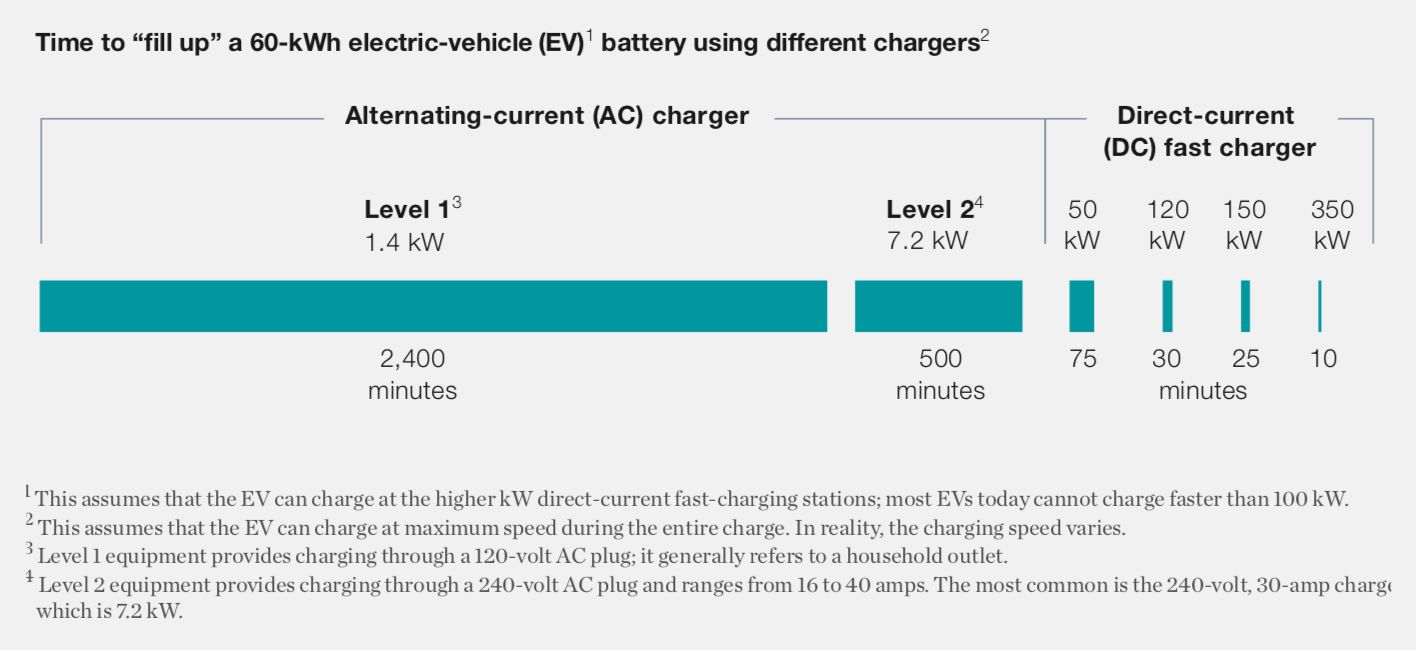Last year marked the best year ever for electric vehicle sales in the U.S. EV sales were up 35 percent over 2016. And in 2016, EV sales jumped 37 percent over the previous year.
EVs currently make up only about 1 percent of all vehicles globally, but a recent spike in regulatory and ratemaking actions indicates that cities, states and utilities are preparing for a tipping point. McKinsey & Company noted in a February report that electric cars could account for 20 percent of the light-duty fleet by 2030. A separate report from Black & Veatch notes that EVs will eventually be the “most common and widespread” distributed energy resource on the grid, with plug-in cars projected to surpass internal combustion engine sales before 2040.
That creates both stresses and opportunities for utilities, which Black & Veatch said should sit “at the center of this new energy ecosystem.”
Transitioning customers from on-demand energy and quick-fueling to the realities of a more grid-tied transportation system will take not just building out infrastructure -- which many states and utilities are now confronting -- but also innovation. That innovation could come in the form of the energy industry's latest darling: battery storage.
“Accustomed to the ease of conventional cars, [consumers] want the same from EVs,” state the McKinsey authors. “For that to happen, charging must become cheaper and easier.”

Source: McKinsey & Company
Right now, juicing up an electric car is nothing like filling a gas tank. The most common type of charger, AC Level 2, can take up to 10 hours to fully charge an empty 60-kilowatt-hour car battery. DC fast chargers can do the same in under an hour, but they cost at least $50,000 and upward of $150,000 for installation of a 150-kilowatt charger.
They're also spendy to run, with much of the cost coming from demand charges that can range from $2 per kilowatt all the way to $90. McKinsey estimated that in high-demand states, battery electric vehicle owners could spend $30 to $50 on a charge.
“Customers just will not pay that,” note the McKinsey authors.
That high price point defines the vicious cycle of charging infrastructure. It costs a lot to install and to run, making sites less likely to install chargers. And because there are few chargers (the U.S. has seven times more gas stations than chargers), range anxiety means fewer potential EV buyers invest in electric cars.
But according to McKinsey, that’s where battery storage comes in.
The consulting firm laid out a peak-shaving model in which on-site batteries can charge off-peak, store the power, and discharge to cars without taking more power from the grid. If more than one car needs to charge at one time, one can draw from the battery while the other pulls from the grid.

Source: McKinsey & Company
McKinsey’s analysis shows that batteries could reduce demand charges by a full 73 percent, leveling out load peaks in the process and making charging stations more affordable.
This solution would only work in the liminal space between marginal EV use and widespread uptake. As more cars hit the roads, batteries would not have the time to fully charge and fuel all cars. Economies of scale would also make the demand charge nominal with more cars using stations. But McKinsey's report says batteries could then be used for demand response or other grid services.
Black & Veatch also noted the value energy storage could offer utilities in balancing load created from a surge in electric vehicles.
According to that report, if the 251 millions cars Americans drove in 2014 were electrified, they would require 13,777 terawatt-hours of electricity per year to operate, equal to over a third of the U.S.’ total 2015 electricity consumption.
While the consulting, construction and engineering group argued that enough energy generation exists to support a growing EV fleet, “the question is whether utilities can distribute power where EV owners need…while managing the variable power demands of charging across cities and timeframes.”
Storage, as both a generation source and a load source, adds much-needed flexibility in the short term. Batteries could provide an important bridge for existing chargers until widespread adoption and infrastructure take hold, or scientists improve prospects for fast-charging supercapacitors.
"Battery storage could be the tipping point to accelerate build-out of fast charging networks," said Jesse Noffsinger, cleantech service line manager at McKinsey & Company. Noffsinger added that the recent Federal Energy Regulatory Commission rule that allows storage access to wholesale markets should provide further security for a future with station-sited batteries.
Without innovative solutions like storage, the two firms argue that the capacity for utilities and the grid to handle EV expansion will likely be stunted.
“Businesses that do not electrify will be at a competitive disadvantage,” said Paul Stith, director of strategy and innovation with Black & Veatch’s Transformative Technologies Group.
They could also find themselves with overloaded transformers, stretched resources and dissatisfied drivers.




